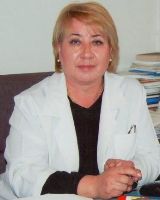CAUSES, STRUCTURES AND CLINICAL FEATURES OF EXTERNAL NOSE INJURIES
DOI:
https://doi.org/10.54890/1694-8882-2025-2-81Abstract
External nasal trauma is a common type of craniofacial injury, particularly in children and adolescents. Understanding its causes, anatomical structures involved, and clinical features is essential for timely diagnosis and effective treatment.
Objective: To analyze the etiology, morphological characteristics, clinical presentation, and treatment approaches for external nasal injuries.
Methods. The study involved clinical, otorhinolaryngological, ophthalmological, neurosurgical, radiological (including multi-slice computed tomography, magnetic resonance imaging, and conebeam computed tomography), and laboratory examinations. Patient medical records were analyzed to assess structural changes in the nasal bones, paranasal sinuses, orbits, and brain. Functional outcomes were evaluated using acoustic rhinometry; aesthetic results were assessed through photographic comparisons; and quality of life was measured using the Pediatric Quality of Life Inventory (PedsQL 4.0).
Results. The leading causes of nasal trauma were domestic accidents, sports injuries, and road traffic incidents. Fractures with nasal deformity were the most common type of injury, often requiring reposition. The optimal period for surgical intervention was found to be 5–10 days post-injury. A multidisciplinary approach significantly improved both functional and aesthetic outcomes.
Conclusion. Early diagnosis and timely management of external nasal trauma are critical for preventing complications and ensuring optimal functional and cosmetic results. A comprehensive, interdisciplinary evaluation is essential in managing such injuries effectively.
Keywords:
external nasal trauma; nasal fractures; pediatric otorhinolaryngology; multidisciplinary approachReferences
1. Сергеев М.М., Мусельян Б.Б., Смирнов П.В., Россейкина Т.П. Травматические повреждения ЛОР-органов и их лечение у детей. Российская оториноларингология, 2009;(5):108–112. [Sergeev MM, Muselyan BB, Smirnov PV, Rosseyikina TP. Traumatic injuries of ENT organs and their treatment in children. Russian Otorhinolaryngology. 2009;(5):108–112. (in Russ.)].
2. Andrades P, Pereira N, Borel C, Rocha L, Hernández R, Villalobos R. A new approach to nasoseptal fractures: Submucosal endoscopically assisted septoplasty and closed nasal reduction. J Craniomaxillofac Surg. 2016;44(10):1635–1640. https://doi.org/10.1016/j.jcms.2016.07.004
3. Рыбалкин С.В. Тактика хирургического лечения переломов костей носа у детей. Детская хирургия. 2004;2:26–29. [Rybalkin SV. Surgical management tactics for nasal bone fractures in children. Pediatric Surgery. 2004;2:26–29. (in Russ.)].
4. Рыбалкин С.В. Современные методы диагностики и особенности тактики хирургического лечения переломов костей носа у детей [Автореф. дис.]. Москва; 2005. 44 с. [Rybalkin SV. Modern diagnostic methods and surgical management features of nasal bone fractures in children [dissertation abstract]. Moscow; 2005. 44 p. (in Russ.)].
5. Park CH, Chung KJ, Kim TG, Lee JH, Kim IK, Kim YH. Big Data Statistical Analysis of Facial Fractures in Korea. J Korean Med Sci. 2020;35(7):e57. https://doi.org/ 10.3346/jkms.2020.35.e57
6. Haapaniemi J, Suonpää JT, Salmivalli AJ, Tuominen J. Prevalence of septal deviations in school-aged children. Rhinology. 1995;33(1):1–3.
7. Дайхес Н.А., Юнусов А.С., Рыбалкин С.В., Молчанов Е.Б. Современные подходы к лечению деформаций перегородки носа у детей: Клинические рекомендации. Москва – Санкт –Петербург; 2015. 15 c. [Daikhes NA, Yunusov AS, Rybalkin SV, Molchanov EB. Modern approaches to the treatment of nasal septum deformities in children. Clinical guidelines. Moscow–St. Petersburg; 2015. 15 p. (in Russ.)]
8. Хасанов С.А., Бобохонов М.Г., Бабаханов Г.К.Септопластика у детей – за и против.Новости дерматовенерологии ирепродуктивного здоровья. 2023;1 (101):88–90. [Khasanov SA, Bobokhonov MG, BabakhanovGK. Septoplasty in children – oppositors andsupporters. The news of Dermatovenerology and Reproduction Health. 2023;1:88–90. (in Russ.)].Режим доступа:https://ndrz.uz/issue/2023/ndrz-2023-1.pdf
9. Koltai PJ, Rabkin D. Management of facialtrauma in children. Pediatr Clin North Am.1996;43(6):1253–1275. https://doi.org/10.1016/S0031-3955(05)70518-6
10. Wright RJ, Murakami CS, Ambro BT. Pediatricnasal injuries and management. Facial PlastSurg. 2011;27(5):483–490.https://doi.org/10.1055/s-0031-1288931
11. Morris C, Kushner GM, Tiwana PS. Facialskeletal trauma in the growing patient. OralMaxillofac Surg Clin North Am. 2012;24(3):351–364. https://doi.org/ 10.1016/j.coms.2012.05.005
12. Andrew TW, Morbia R, Lorenz HP. PediatricFacial Trauma. Clin Plast Surg. 2019;46(2):239–247. https://doi.org/10.1016/j.cps.2018.11.008
13. Borner U, Anschuetz L, Kaiser N, Rieke A,Dubach P, Caversaccio M. Blunt nasal trauma inchildren: a frequent diagnostic challenge. EurArch Otorhinolaryngol. 2019;276(1):85–91.https://doi.org/10.1007/s00405-018-5183-1
14. Кузиев О.Ж. Критерии судебно-медицинскойоценки переломов костей носа [авторефератдис.]. Ташкент: 2008. 17 с. [Kuziyev OZh.Criteria for forensic medical evaluation of nasalbone fractures [dissertation abstract]. Tashkent;2008. 17 p. (in Russ.)].
15. Мадаминова М.А., Нуралиев М.А., НасыровМ.В. Заболевания носа и околоносовых пазух:Методическое пособие. Бишкек; 2023. 5.4 п.л.[Madaminova MA, Nuraliyev MA, Nasyrov MV.Diseases of the nose and paranasal sinuses:Methodological manual. Bishkek; 2023. 5.4 publishing sheets. (in Russ.)]
16. Халилов Н.М., Мадаминова М.А., ШаюнусовШ.Ф., Сайпуркан у.Б. Целесообразностьодномоментных функциональных иэстетических вмешательств на примереринопластики и операциях на элементах полостиноса. Вестник КРСУ. 2020;20(5):95–99.







